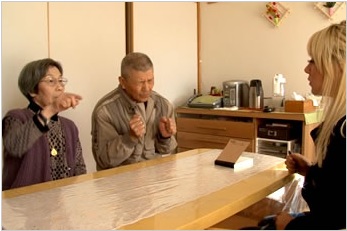東日本大震災において障害者の死亡率は健常者のおよそ2倍となり、聴覚障害者では70人を超える犠牲者がでた。なぜこのような事態が起きたのか?震災直後、沿岸部に津波が押し寄せるまでの数十分の間、迫りくる津波の危機を告げていたのは、警報・ラジオ・声などの《音》のみ。それが聴覚障害者たちに届かなかったからだ。さらに避難所ではアナウンスが伝わらず、周囲とコミュニケーションも取れず孤立した聴覚障害者たち。番組では、手話のできるアメリカ人リポーター、アシュリー・ライアンが犠牲者の多かった宮城県を訪ね、聴覚障害者と健聴者双方の証言をもとに、無音の世界で起きた大災害の実態と有効な防災対策を検証する。
英語版 NHK WORLD
Dec 14, Jan 4
The Experience of 3.11 in Silence
The mortality rate of disabled persons during the 3.11 disaster was approximately double the average; specifically, more than 70 deaf people lost their lives. Why is that? As it happened, in the time between the quake and the arrival of the tsunami, TV broadcasts had been cut off and the deaf were unable to access the information in radio and neighborhood warnings. Moreover, these people suffered an information gap at the evacuation sites, where they were unable to hear announcements. This edition of TOMORROW explores this issue and seeks effective measures for future disasters.














